South Korea has test-fired a homegrown submarine-launched ballistic missile (SLBM), Yonhap news agency reported yesterday, as it seeks to build up its forces to defend itself from the nuclear-armed North.
Pyongyang has long sought to develop SLBM technology, and in January showed off four such devices at a military parade overseen by North Korean leader Kim Jong-un, with the Korean Central News Agency calling them “the world’s most powerful weapon.”
However, while North Korea has released pictures of underwater launches, most recently in 2019, analysts believe that was from a fixed platform or submersible barge, rather than a submarine.
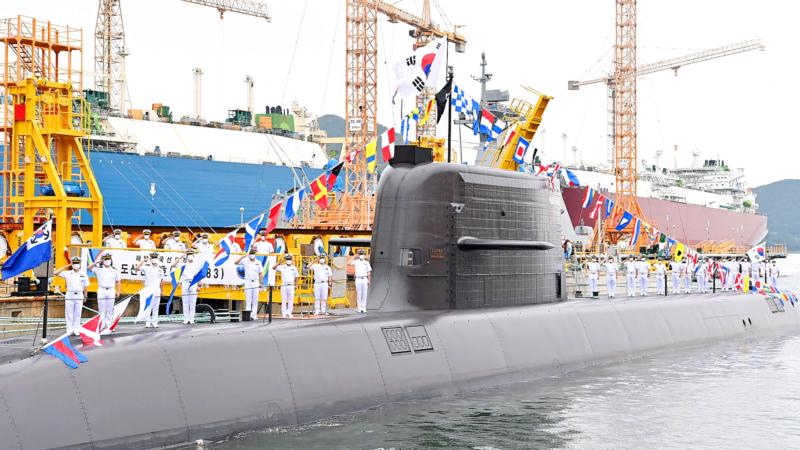
Photo: AFP / South Korean Ministry of National Defense
The South Korean Agency for Defense Development last week carried out underwater ejection tests of the SLBM from a new, locally developed 3,000-tonne class submarine fitted with six vertical launching tubes, Yonhap reported, citing unnamed military sources.
The SLBM is believed to be a variant of the country’s Hyunmoo-2B ballistic missile, with a range of about 500km, and is to be mass produced for deployment after another round of tests, it added.
South Korea joins only a handful of countries to have successfully developed an SLBM.
Seoul on Monday allocated nearly 1.5 trillion won (US$1.3 billion) for defense technology research and development next year in a budget request submitted to parliament.
If approved, it would represent a 76 percent jump in the research budget of the Defense Acquisition Program Administration, which would be used to “actively develop cutting-edge, future technologies,” a press release said.
Pyongyang is also looking to further enhance its submarine forces. In January, Kim told the Workers’ Party of Korea congress that the North had completed plans for a nuclear-powered submarine.
Any such vessel is likely to be years away from going into service, but analysts say it could be a strategic game changer, enabling Pyongyang to launch a surprise strike underwater even if its land-based forces had been destroyed.
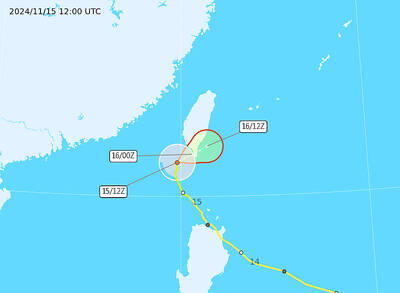
Typhoon Usagi yesterday had weakened into a tropical storm, but a land warning issued by the Central Weather Administration (CWA) was still in effect in four areas in southern Taiwan. As of 5pm yesterday, Tropical Storm Usagi was over waters 120km south-southwest of Oluanpi (鵝鑾鼻), the southernmost tip of Taiwan proper, and was moving north at 9kph, CWA data showed. The storm was expected to veer northeast later yesterday. It had maximum sustained winds of 101kph, with gusts of up to 126kph, the data showed. The CWA urged residents of Kaohsiung, Pingtung County, Taitung County and the Hengchun Peninsula (恆春) to remain alert to
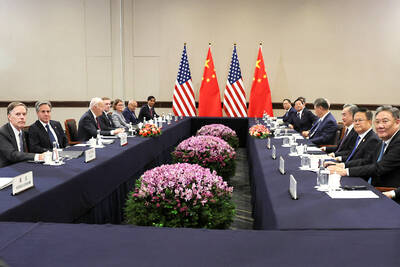
ONE LAST TALK: While Xi said that Taiwan was a ‘red line,’ Biden, in what is likely his last meeting with Xi as president, called for an end to China’s military activity around Taiwan China’s military intimidation and economic coercion against Taiwan are the main causes of tensions that are destabilizing peace in the Taiwan Strait, Taipei said yesterday while thanking US President Joe Biden for expressing Washington’s firm stance of maintaining peace and stability in the region. Biden and Chinese President Xi Jinping (習近平) met on Saturday for their third meeting and their first talks in seven months on the sidelines of the APEC forum in Lima, Peru. It was likely Biden’s last meeting as president with Xi. During their conversation, Biden reiterated the US’ opposition to any unilateral change to the “status quo” from either
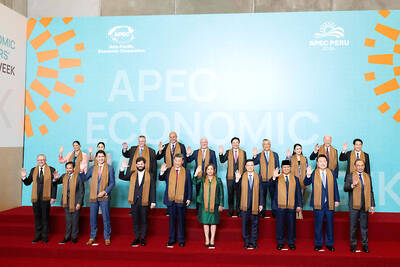
Taiwan would participate in the 2026 APEC summit to be hosted by China after Beijing promised it would ensure the personal safety of attendees, Taiwanese national security sources said yesterday. The APEC Leaders’ Machu Picchu Declaration announced yesterday said that China would host the APEC summit in 2026. Beijing proposed hosting the summit shortly before this year’s gathering began on Friday, a national security official said, speaking on condition of anonymity. Many APEC members expressed concerns about China hosting the event and said that prior communication over the decision was insufficient, the official said. Taiwan brought up concerns about legal “guidelines” China announced in
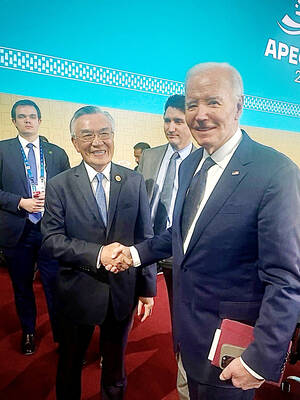
MEET AND GREET: The White House, which called the interaction ‘just a handshake,’ did not immediately respond to a request for comment on whether Biden planned to visit Taiwan’s envoy to the APEC summit, Lin Hsin-i (林信義), on Friday invited US President Joe Biden to visit Taiwan. During the APEC Leaders’ Informal Dialogue, Lin, who represented President William Lai (賴清德) at the summit, spoke with Biden and expressed gratitude to the outgoing US president for his contribution to improving bilateral ties between Taipei and Washington over the past four years, the Ministry of Foreign Affairs said. Lin and Biden exchanged views during the conversation, with Lin extending an invitation to Biden to visit Taiwan, it said. Biden is to step down in January next year, when US president-elect Donald Trump is